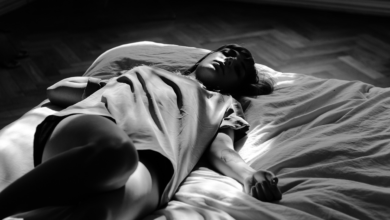Sure! Here are seven engaging blog post titles centered around the theme of drawing:oldj_7nsvxk= skull

drawing:oldj_7nsvxk= skull has long been celebrated as a powerful form of expression. Among various subjects, skulls hold a unique place in the art world. They evoke feelings that range from intrigue to contemplation. Whether you’re an aspiring artist or seeking stress relief, diving into the world of skull drawings can be rewarding and therapeutic.
Imagine picking up your pencil and transforming blank paper into intricate depictions of these iconic shapes. Each stroke tells a story that connects history with modern interpretations while providing an outlet for creativity. If you’ve ever considered sketching as a hobby, there’s no better time to explore this fascinating theme! Let’s delve deeper into why drawing:oldj_7nsvxk= skull is an artistic choice and a journey worth taking.
Why Drawing is the Perfect Hobby for Stress Relief
Drawing serves as a beautiful escape from the daily grind. It allows your mind to focus on creativity rather than stressors. When you immerse yourself in sketching, everything else fades away.
The rhythmic motion of the pencil against the paper has a meditative quality. As you draw, your breathing slows, and your thoughts stabilize. This simple act can provide instant relief from anxiety.
Moreover, drawing encourages self-expression without judgment. You create purely for yourself, which fosters a sense of freedom and satisfaction. Each line and shade captures emotions that words sometimes can’t convey.
It is engaging with art releases endorphins—the body’s natural mood lifters. Every creation brings joy and fulfilment, whether it’s intricate skull designs or abstract forms. Embracing this hobby is not just about mastering techniques; it’s also about nurturing your mental well-being through artistic exploration.
The History of Skulls in Art: From Ancient Times to Modern Pop Culture
Skulls have long captivated artists throughout history. From ancient civilizations to contemporary culture, they have beenthey’ve symbols of mortality and rebirth.
In ancient Egypt, skulls were depicted in intricate hieroglyphics, often associated with the afterlife. Similarly, Mesoamerican cultures revered skull imagery during rituals celebrating life and death.
As art evolved through the Renaissance, artists like Hans Holbein incorporated skulls into still lifes. These pieces reflected a fascination with vanitas—reminders of life’s fleeting nature.
Fast forward to modern pop culture. drawing:oldj_7nsvxk= skullSkulls now adorn everything from fashion to tattoos. They evoke rebellion and edginess while maintaining their deep-rooted symbolism.
This evolution shows how timeless the allure of skull imagery truly is. Whether seen in classic paintings or on streetwear brands today, their presence remains powerful and thought-provoking.
Drawing Techniques: How to Master the Art of Sketching Skulls
Mastering the art of sketching skulls begins with understanding their structure. Study the primary forms: spheres for the skull and rectangles for the jaw. This foundational knowledge helps you build a realistic representation.
Use reference images to practice observation. Look closely at details like shadows, contours, and proportions. The more you analyze, the easier it becomes to replicate those features in your sketches.
Experiment with different techniques, such as cross-hatching or stippling, to create depth and texture. Each method adds a unique flair to your artwork.
Don’t hesitate to use grid lines to maintain proportions while drawing complex angles. This guide can be beneficial when capturing intricate designs.
Embrace mistakes; they are part of growth in any artistic journey. Sketch regularly without fear—each attempt brings you closer to mastering skull drawings.
The Symbolism Behind Skull Drawings and What They Can Represent
drawing:oldj_7nsvxk= skull have captivated artists and audiences for centuries. They often evoke a range of emotions, from fear to fascination. The skull represents mortality, serving as a reminder of the impermanence of life.
In many cultures, skulls symbolize rebirth and transformation. This duality resonates deeply with those who appreciate their aesthetic beauty while contemplating deeper meanings.
Furthermore, skull imagery is prevalent in themes like danger and rebellion. Unsurprisingly,It’s it frequently appears in tattoos or fashion designs that challenge societal norms.
Artists use skulls to convey messages about life’s fragility. Each stroke can reflect personal experiences or broader human truths.
For some, drawing:oldj_7nsvxk= skull is an exploration of identity and vulnerability. These intricate representations serve as art and a profound commentary on existence.
Exploring Different Mediums for Drawing Skulls: Pencil, Ink, Charcoal, and More!
When drawing:oldj_7nsvxk= skull, your chosen medium can profoundly impact your final piece. Pencil is often favoured for its versatility and ease of use. The ability to create fine details and subtle shading makes it an excellent choice for beginners and experienced artists.
Ink offers a bold alternative. It allows for sharp lines that can add dramatic flair. Experimenting with varying pressure can produce striking contrasts in your work.
Charcoal brings an entirely different texture to drawing:oldj_7nsvxk= skull. Its rich, dark tones provide depth and intensity that pencil or ink may need to improve. Blending charcoal creates smooth transitions between highlights and shadows.
Don’t overlook digital mediums, either! Tablets enable endless possibilities for experimentation without the mess of traditional materials. Each medium has unique drawing:oldj_7nsvxk= skull qualities that enhance your artistic expression, inviting you to explore this fascinating subject matter further.
From Beginner to Pro: Tips for Improving Your drawing:oldj_7nsvxk= skull
Improving your drawing:oldj_7nsvxk= skull skills requires practice and patience. Start by familiarizing yourself with the anatomy of a skull—study reference images to understand their structure more deeply.
Practice sketching basic shapes, like spheres and cylinders, first. These will serve as the foundation for creating realistic skull forms. Gradually add details like cheekbones, eye sockets, and teeth.
Experiment with different techniques to see what resonates with you. Whether it’s fine lines or bold strokes, finding your style is essential in developing confidence.
Don’t avoid using various mediums; each offers unique textures that can enhance your work. Pencil sketches allow for easy corrections, while ink creates striking contrasts.
Seek feedback from fellow artists or online communities dedicated to drawing:oldj_7nsvxk= skulls. Constructive criticism can open new perspectives on your work.
Set aside time regularly to draw without pressure or judgment—this is where creativity flourishes! Embrace mistakes as learning experiences; they are stepping stones toward improvement.
With dedication and an open mind, you’ll evolve from beginner to pro quickly!





